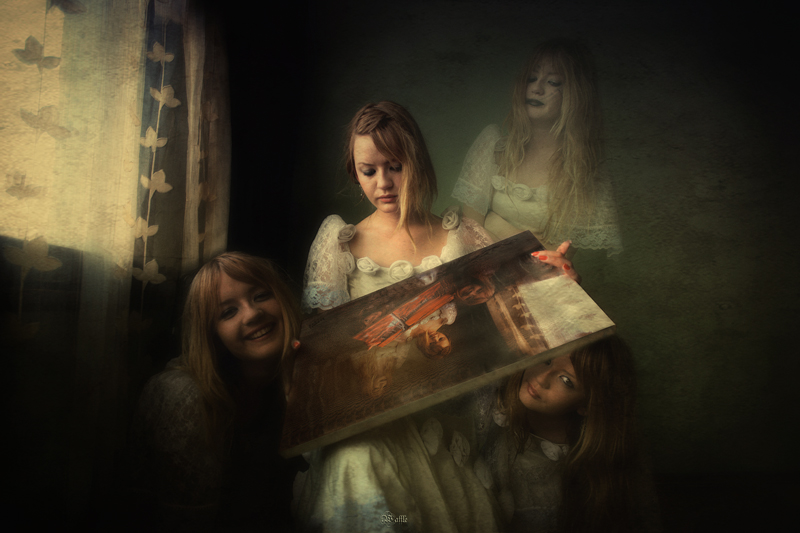Literally Why- Alice in Wonderland is Low-Key About Schizophrenia

Literally Why: Alice in Wonderland is Low-Key About Schizophrenia
Disney Edition, Article 2
Welcome back to Literally Why: Disney Edition, where I lovingly ruin your childhood one psychoanalysis at a time. If you missed Article 1, I dissected the Beauty and the Beast mess and called out Belle for catching feelings in a literal hostage situation (Stockholm syndrome, anyone?). But today, I'm diving headfirst into Alice in Wonderland, where reality checks are nonexistent, and logic went out for milk and never came back.
Buckle up peeps, because this isn’t just a whimsical fever dream, and it plays out like a schizophrenic hallucination in an animated form.
Falling Down the Rabbit Hole (Dissociation, But Make It Disney)
So imagine being Alice, chilling in a meadow, living that 1800s aesthetic girl life, and then BOOM! Talking rabbit! Waistcoat! Anxiety issues! Naturally, you follow him because Why not? Big mistake. You plummet down a rabbit hole into a place where you shrink and stretch, queens are bloodthirsty, and nothing remotely resembles normalcy.
Sound familiar? It should, because that sudden, chaotic shift is what dissociation feels like. For someone with schizophrenia, it’s not just getting lost in Wonderland; it’s being catapulted into a world where reality glitches and makes ZERO sense.
(Also uhm… can we talk about Alice’s decision-making skills? If a random talking animal sprinted through my front yard, I’m calling animal control - not diving headfirst in after it like I’m auditioning for a chaotic Narnia remake.)
Wonderland's Hall of Mirrors (Hallucinations & Distorted Reality)
One of the defining symptoms of schizophrenia is hallucinations, and Alice in Wonderland is basically a messed up playground of them.
- The Cheshire Cat: This floating, grinning menace isn’t just creepy, he represents that blurred line between what’s real and what isn’t. He comes and goes without warning, just like intrusive visual hallucinations.
- Talking Flowers: Petty gossipers who chirp about Alice like nosy aunties at a family wedding. Hallucinations can often be auditory, and Alice isn’t just hearing voices, she’s clapping back.
- Drink Me, Eat Me: Reality distortion alert. Nothing behaves the way it should, which mimics how someone with schizophrenia might experience their environment.
Here’s the kicker: hallucinations aren’t just spooky moments. They’re vivid, immersive experiences that feel 100% real to the person having them. Just like Alice, people with schizophrenia are constantly trying to make sense of a world that plays by its own rules.
Delusions and Wonderland Logic: The Tea Party That Makes No Sense
Schizophrenia often comes with delusions — those unshakable beliefs that defy reason. And hellooo, Wonderland’s residents are thriving on delusional vibes.
- The Mad Hatter: Fully convinced time is broken and throwing chaotic unbirthday parties to compensate. (Honestly, a vibe – but also, delusional… like, uhm, me ...)
- Alice herself: She genuinely believes she can reason her way through Wonderland. Sweetheart, no. Wonderland isn't built for logic; it's built for havoc and questionable decisions.
Trying to use reason in a place designed to defy it is a bit like arguing with your Wi-Fi router when it won’t connect. Frustrating, pointless, and you’re left questioning your own sanity.
Paranoia (Queen of Hearts Energy)
Ah yes, the Queen of Hearts: The reigning monarch of paranoia and temper tantrums. She’s convinced everyone is out to get her, whether the offence was stealing her roses or just mustering up the audacity to exist in her vicinity.
People with schizophrenia often experience paranoia, where even innocent interactions can feel threatening. The Queen’s “Off with their heads!” catchphrase? Classic paranoid delusion energy.
Like, imagine being this level of unhinged. Your Amazon package is delayed? Off with their heads! Someone steals your parking spot? Off with their heads! Someone chews too loudly at dinner? Well, you get the vibe. Wonderland is just enabling her, honestly. Therapy could never.
Navigating a Wonderland of the Mind
This is where we hit the "a-ha" moment. Wonderland isn’t just a chaotic fairytale — it’s a metaphor for how disorienting and isolating schizophrenia can be.
Alice is constantly questioning what’s real and who she can trust. Her journey mirrors the daily struggle of those with schizophrenia, who have to navigate a world that doesn't always make sense. And here's the kicker: Alice never stops pushing forward. She questions, she challenges, and she fights to find clarity in the madness.
That's powerful. It’s a reminder that even in the wildest of mindscapes, there’s resilience, strength, and hope.
The Lesson: Embrace the Madness, But Seek Clarity
What can we learn from Alice’s wild journey? First, mental health matters babes (not an activist, just spillin’ facts here ), and understanding psychological conditions like schizophrenia helps break the stigma. Second, if you see a talking rabbit, maybe just let him be. And third, sometimes the best way out of chaos is to question everything.
So there you have it– schizophrenia, Disney-style. And remember, if you loved this article, go back and read Article 1 on how Belle basically dated her captor because childhood ruined, you're welcome. Stay tuned for more psychological dissections of your favorite Disney movies, because apparently, I won't let anyone have nice things.
About The Author
Written by Aasiya Buhari: someone who juggles schoolwork and a deep interest in science. I hope this article inspires others to find time for their passions. Thank you for reading!
Similar Post You May Like
-

CFCs, HFCs and their long, troubled history
At its peak, the ozone hole covered an area 7 times larger than the size of Europe, around 29.9 million km2, and was rapidly expanding
-

The Origin of Universe: Deciding point where it all began!
Let us unravel and surf through the ideas throughout ages to understand what the universe and its origin itself was to its inhabitants across history.
-

The Artemis Program
Inspired by the Greek goddess of the Moon, twin sister to Apollo, the artimis program was named on 14 May 2019 by Jim Bridenstine.






